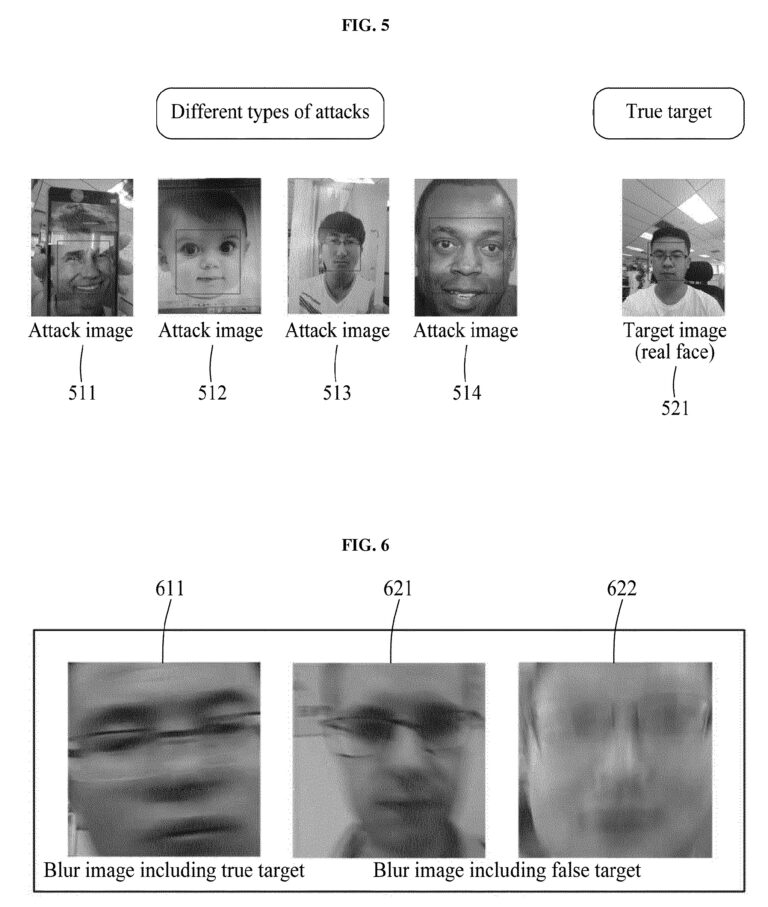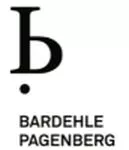The invention relates to liveness detection, which analyses image quality (resolution, ISO, brightness, sharpness), then selects a neural network trained for that specific quality type, and determines a liveness score. The Examination Division considered that it was obvious the skilled person would use the face authentication for liveness detection and train different CNNs for each quality type. The applicant argued that liveness detection and authentication were different. The Board disagreed and considered that a person skilled in liveness detection will naturally also have regard to prior art from the field of authentication.
However, the Board noted that using the quality parameter as a combination of photographic and attribute parameters for this was not disclosed and remitted the case to the Examining Division for further prosecution
Here are the practical takeaways from the decision: T 1633/22 (Liveness detection/SAMSUNG) of December 10, 2024, of the Technical Board of Appeal 3.5.06
Key takeaways
- If one classifier is specialised for a particular condition, it is implicit, or at least very obvious, that data for that particular condition will be used to train it.
- A person skilled is, generally, interested in improving, or finding alternatives to, known liveness detection methods, based on the knowledge that known methods have known pitfalls.
The invention
The Board defined the invention as follows:
1. The application relates to liveness detection in relation to authentication, e.g. when unlocking a phone based on a face image (page 1, lines 9 to 12). Starting from the observation that known methods, such as those based on local binary patterns, may not be effective under some conditions (e.g. low light; see the paragraph bridging pages 1 and 2), the application proposes to categorize the images as a function of their "quality" and to use different liveness detectors for each quality type (see e.g. page 2).
1.1 The liveness detectors are neural networks classifying the target images into "true" and "false" target images. In particular, they may be cascaded neural networks (see the paragraph bridging pages 2 and 3). The quality type of an image may be determined by "photographic" parameters, such as ISO values or resolution, and "attribute" parameters, e.g. contrast or brightness (see e.g. page 6, lines 18 to 20).

Fig.5 and 6 of EP 3 333 768 A1
Claim 1 of Sole Request
A method of determining whether a target in a target image is a true target, thus detecting liveness of the target, the method comprising:
determining (101), from among a plurality of quality types, a quality type of the target image based on at least one quality value of the target image that is determined in correspondence with at least one quality parameter and a quality type classification standard defined for the at least one quality parameter, wherein the at least one quality parameter comprises a photographing parameter of the target image, including at least one of a resolution and an ISO, and an attribute parameter of the target image, including at least one of a color quasi, a contrast, a brightness, a saturation, and a sharpness;
selecting (102), from a database comprising a plurality of convolutional neural networks associated with the plurality of quality types, a convolutional neural network associated with the determined quality type, wherein the database is acquired by determining quality types of a plurality of sample images, and by training the convolutional neural network associated with the corresponding quality type based on sample images of the corresponding quality type;
determining (103) a detection value of the target image, comprising:
inputting the target image to the selected convolutional neural network; and,
acquiring a detection value of the target image from an output of the selected convolutional neural network, wherein the detection value comprises a probability that the target image is classified as a true sample comprising the true target; and
determining (104) whether a target in the target image is a true target based on the detection value of the target image, wherein the determining comprises comparing the detection value and a preset threshold.
Is it patentable?
The Examining division alleged that the subject-matter lacked inventive step over document D1 (EP 2639731 A2):
3. Document D1 is concerned with face authentication. It explains that when users try to authenticate themselves in conditions different to the ones where the registration took place, the accuracy may suffer (paragraph 8). To address this problem, D1 proposes the use of different classifiers for different conditions. Conditions include face orientation, accessories worn by user (e.g. glasses), but also illumination conditions and "image quality" (paragraphs 20 and 21). A condition-deriving unit detects the current conditions (paragraph 71) and a corresponding classifier is selected for authentication. The classifiers may be, inter alia, neural networks (paragraph 79).
The Examining Division considered that claim 1 of that request differed from D1 only by its use, i.e. (face) liveness detection instead of face authentication. The Applicant argued that the claim includes new features which were not disclosed:
7.1 In particular, the newly added definition was not disclosed in D1. The quality parameter claimed comprised at least two different types of values, attribute and photographic. D1 discussed conditions related to the content of the image, for instance lighting, pose etc., which constitute "attribute" parameters in the terms of the present application, but nothing related to the photographic parameters, i.e. parameters related to the photo camera.
7.2 Furthermore, D1 did not disclose a combination of two types of parameters to define a condition used to select a classifier.
8. The Board agrees that this new feature is not disclosed in D1, because D1 does not disclose the use of photographic (i.e. camera-related) parameters, nor does it disclose a condition for classifier selection based on a combination of parameters.
However, the Board disagreed that the classifier was novel :
10. The Board does not agree. Irrespective of whether the term "classifier" used in D1 is an accurate translation of the Japanese original or whether any of the terms "matcher", "identifier" or "discriminator" is a more appropriate one, the function of what is called a "classifier" in D1 is to produce a binary output, i.e. a label true or false, to indicate whether a particular user is authenticated or not. This makes it a classifier in the sense of the claim.
10.1 Moreover, the passage cited by the Examining Division, namely paragraph 79, clearly states that these classifiers may be neural networks, which are the claimed classifiers.
And reiterated that the training was also implicit:
12.4 Regarding training, the Board considers that if one classifier is specialized for a particular condition, it is implicit, or at least very obvious, that data for that particular condition will be used to train it.
13. Therefore, the Board sees only two differences between claim 1 and D1 which might support the presence of an inventive step, namely that the claimed method is used for liveness detection and that it considers also quality parameters other than those disclosed for the "specialized classifiers" of D1.
The Board then discussed whether it was inventive:
14. Concerning the first difference, the Examining Division considered that the person skilled in the art would apply the method of D1 to (face) liveness detection, (decision, reasons 11.1). It stated in particular: "the skilled person would do the same for live[]ness detection and train different CNNs for each quality type".
15. The Appellant argued in the statement of grounds of appeal (from the bottom of page 3) that there was no incentive in D1 for the skilled person to modify the system "to perform liveness detection using the same specific method disclosed for authentication".
15.1 In the Appellant's view, liveness detection and authentication were distinct tasks, so that when the skilled person were to "[start] from D1 and [look] to implement liveness detection, the straightforward solution" would be to combine just "some type of liveness detection" with the authentication disclosed in D1 "rather than to perform both assessments using the same system". In favour of this argument, the Appellant pointed out that the method of D1 "has authentication-specific advantages discussed in paragraph [0008]".
The Board noted its technical effect, but considered it was obvious:
26. In the present case, the Board assumes a person skilled in liveness detection methods. The Board considers that such a person is, generally, interested in improving, or finding alternatives to, known liveness detection methods, based on the knowledge that known methods have known pitfalls (as the current application also states; see point 1 above).
26.1 Liveness detection for authentication and authentication are closely related technical areas; the Appellant did not contest this. Therefore, a person skilled in liveness detection will naturally also have regard to prior art from the field of authentication for developments relevant to liveness detection. This includes D1.
..
28. Thus, in the Board's judgement, the person skilled in the art in liveness detection would have regard to D1 and would have reason to adapt its solution to liveness detection in a way leading to the invention according to claim 1 of the main request before the Examining Division.
However, the Board identified further features in the new request which may still contribute to inventive step:
29. The current request differs from that request by defining the quality parameter as a combination of photographic and attribute parameters.
30. However, the Board specifically considered a person skilled in the art of liveness detection. There may be reasons related to this specific field to also consider photographic parameters.
30.1 The Board notes that during examination a relatively large number of documents were cited, some of them concerned with liveness detection, but were not discussed in the decision. A positive decision on inventive step cannot be issued before at least these documents have been discussed.
Therefore, the Board remitted the case to the Examining Division for further prosecution.
More information
You can read the full decision here:T 1633/22 (Liveness detection/SAMSUNG) of December 10, 2024, of the Technical Board of Appeal 3.5.06
The content of this article is intended to provide a general guide to the subject matter. Specialist advice should be sought about your specific circumstances.


